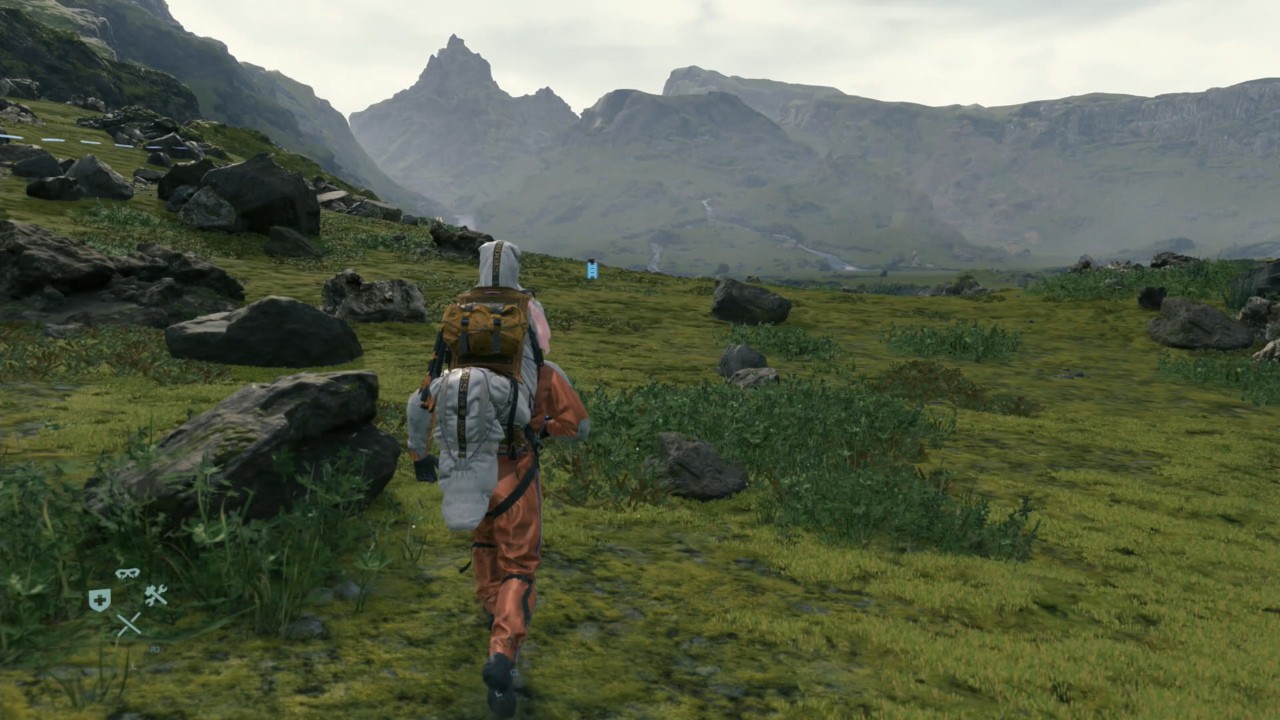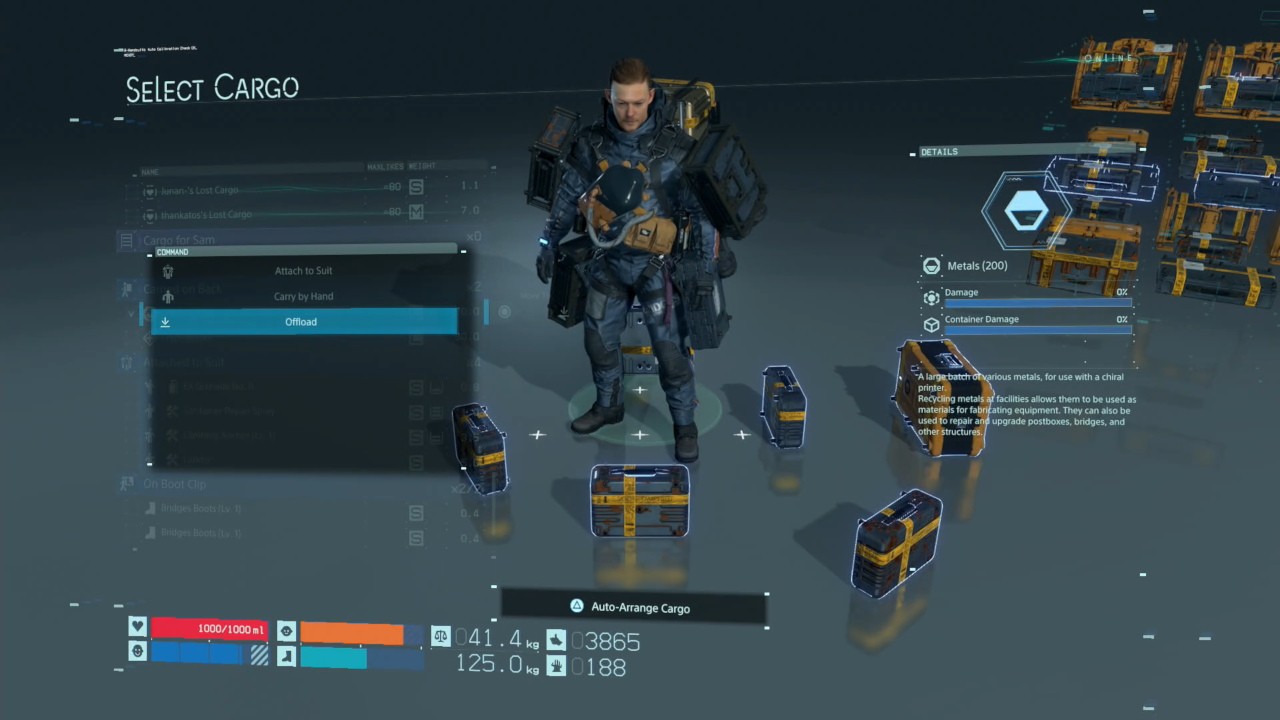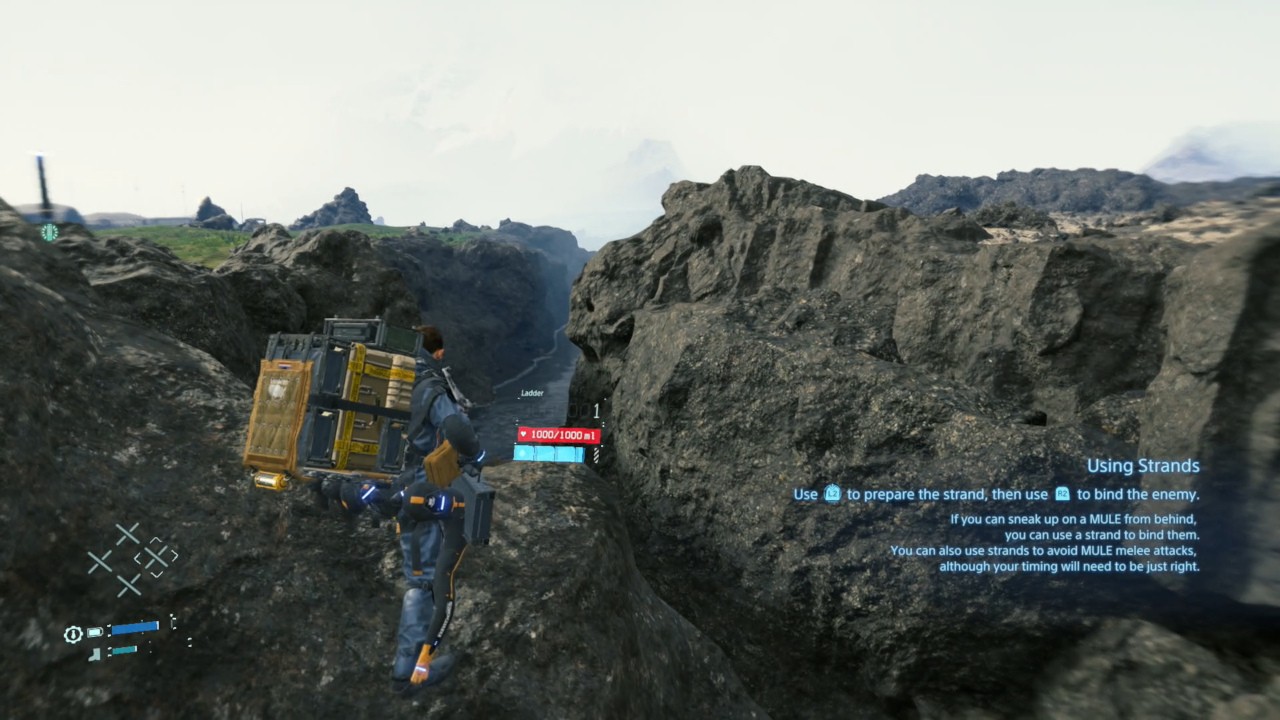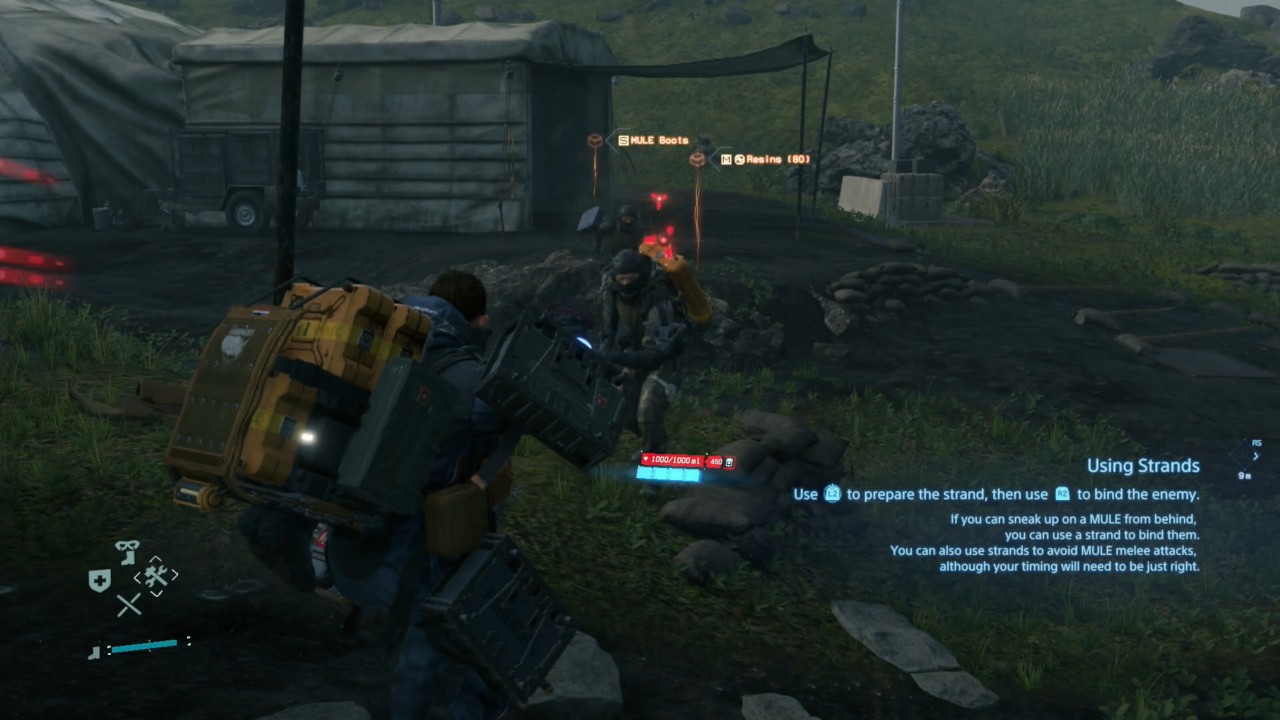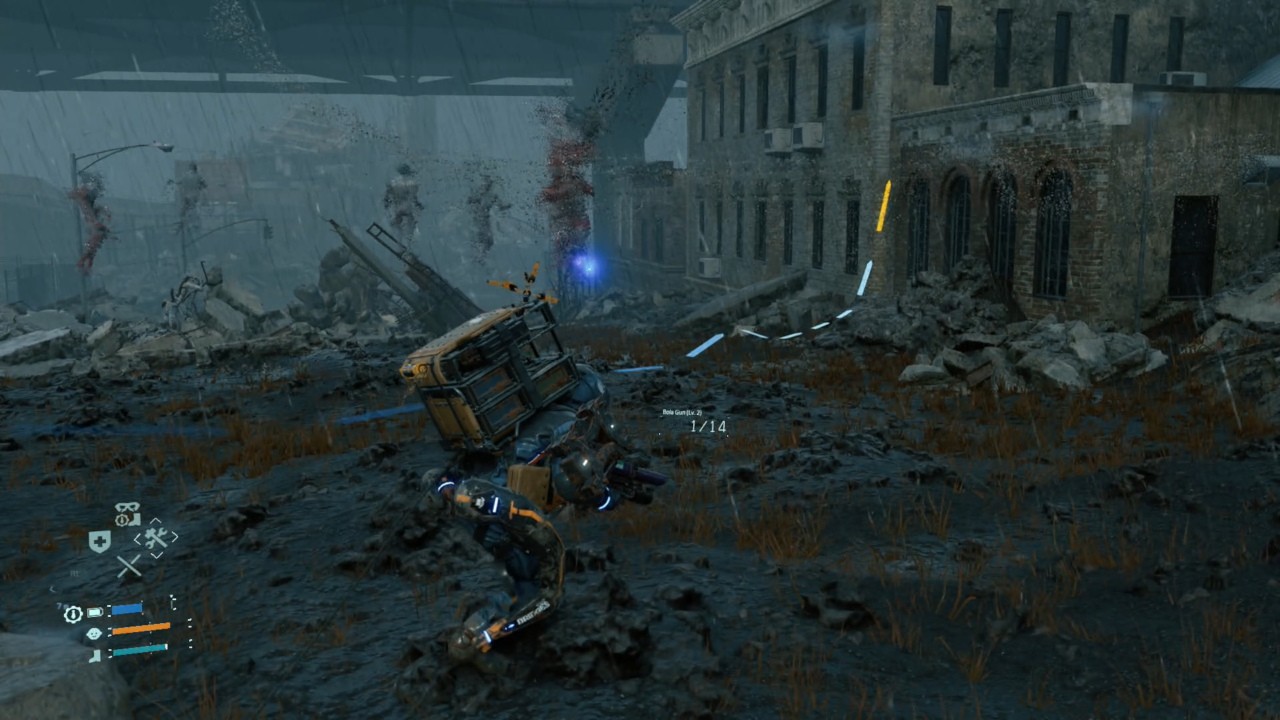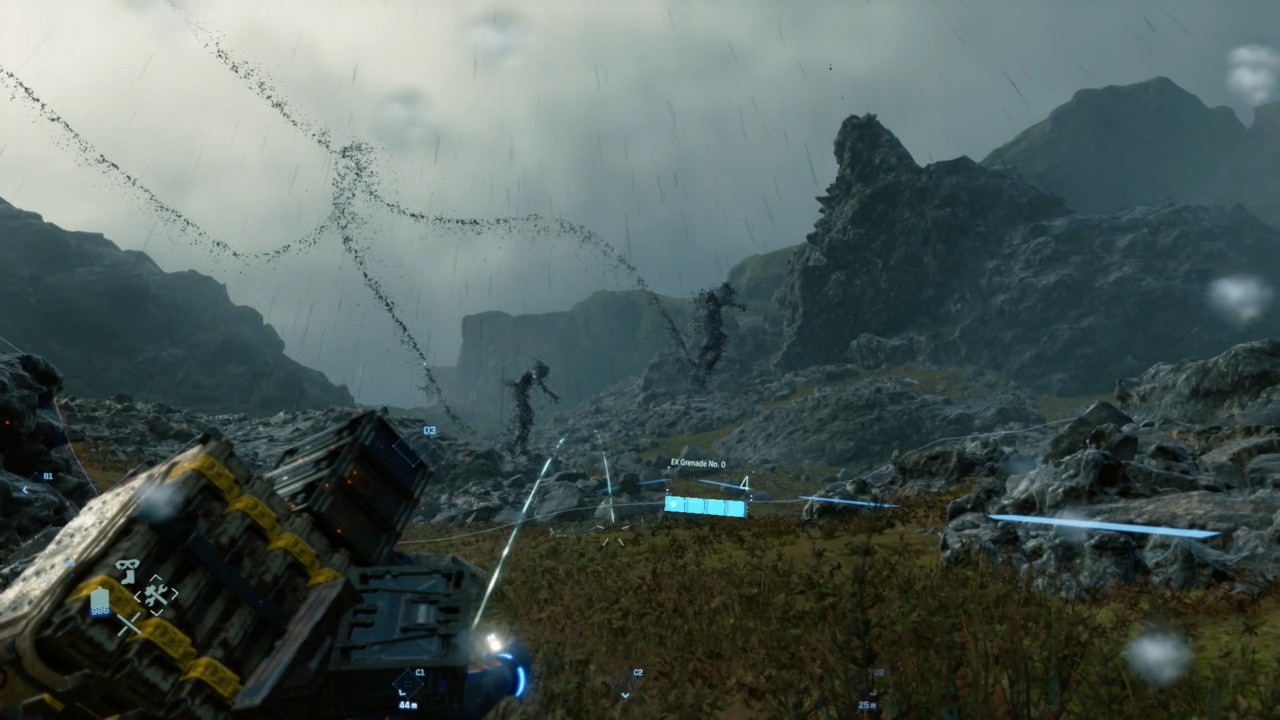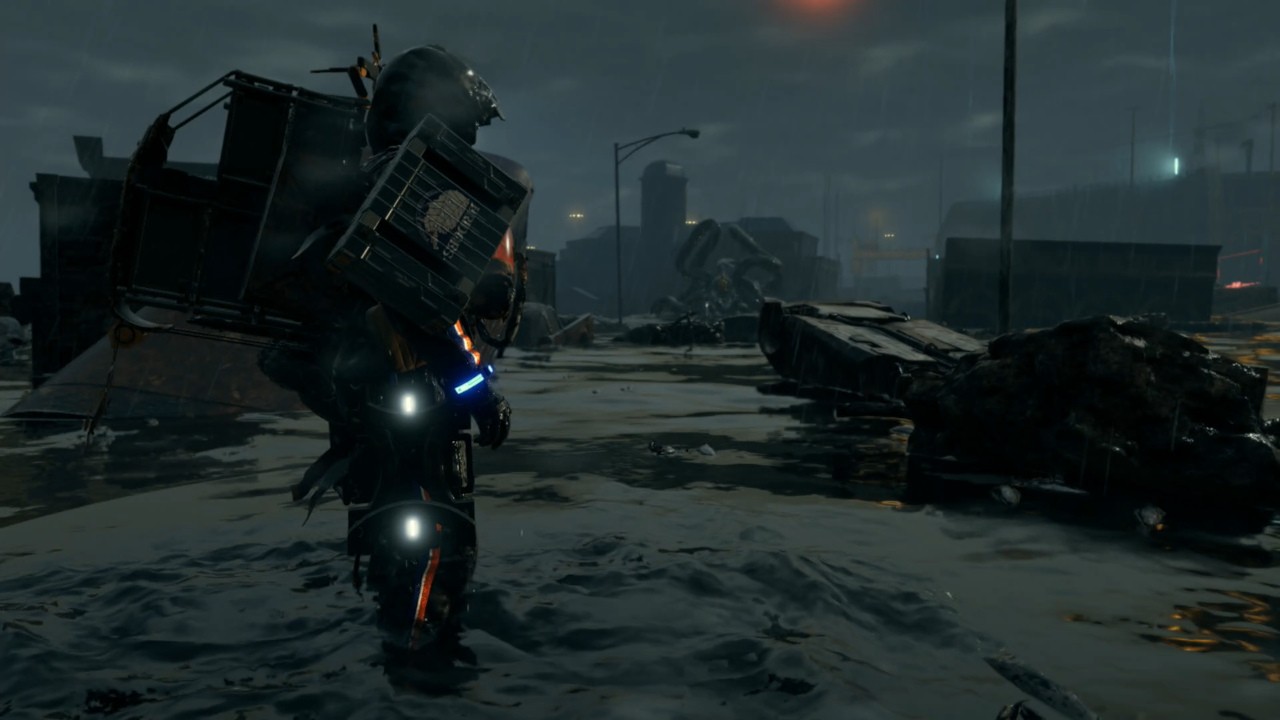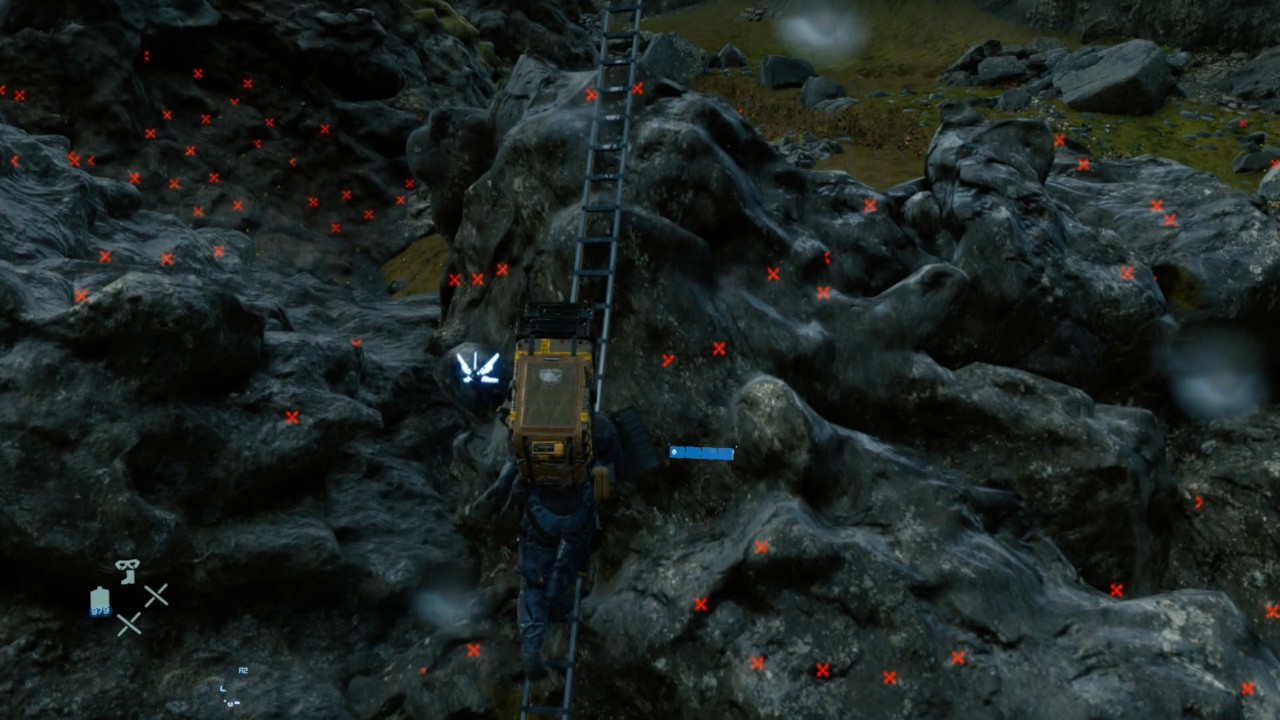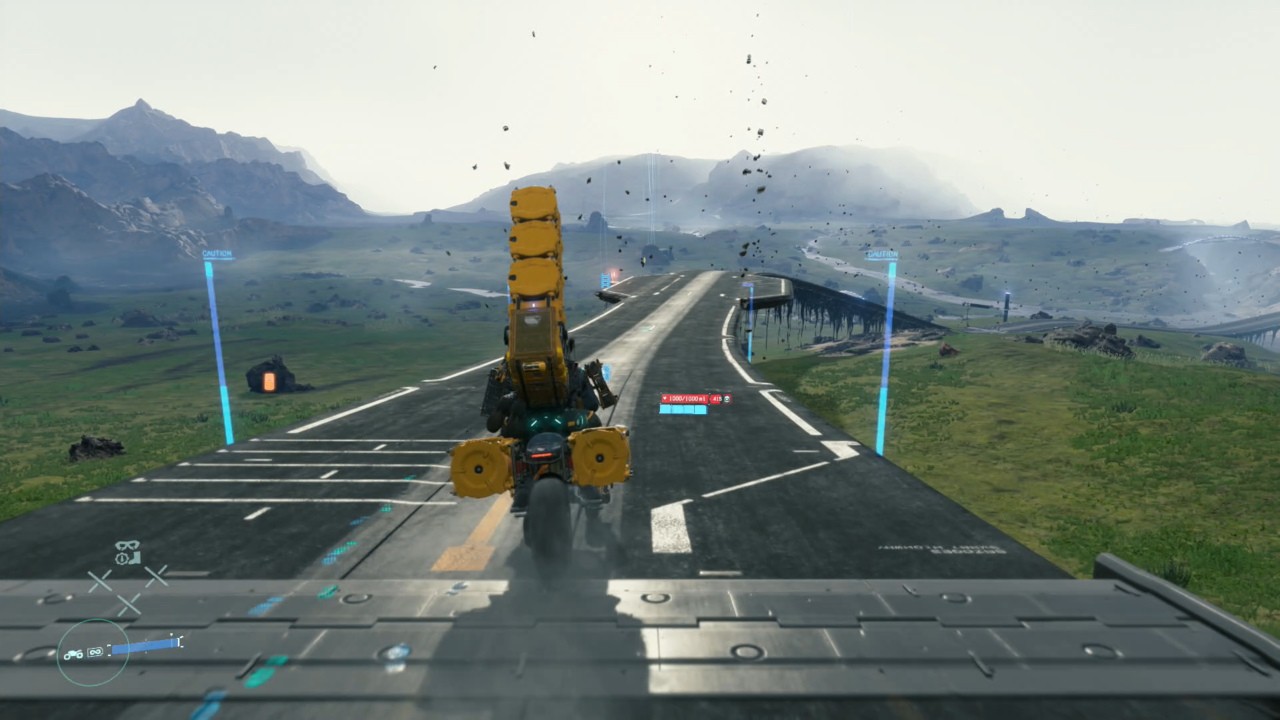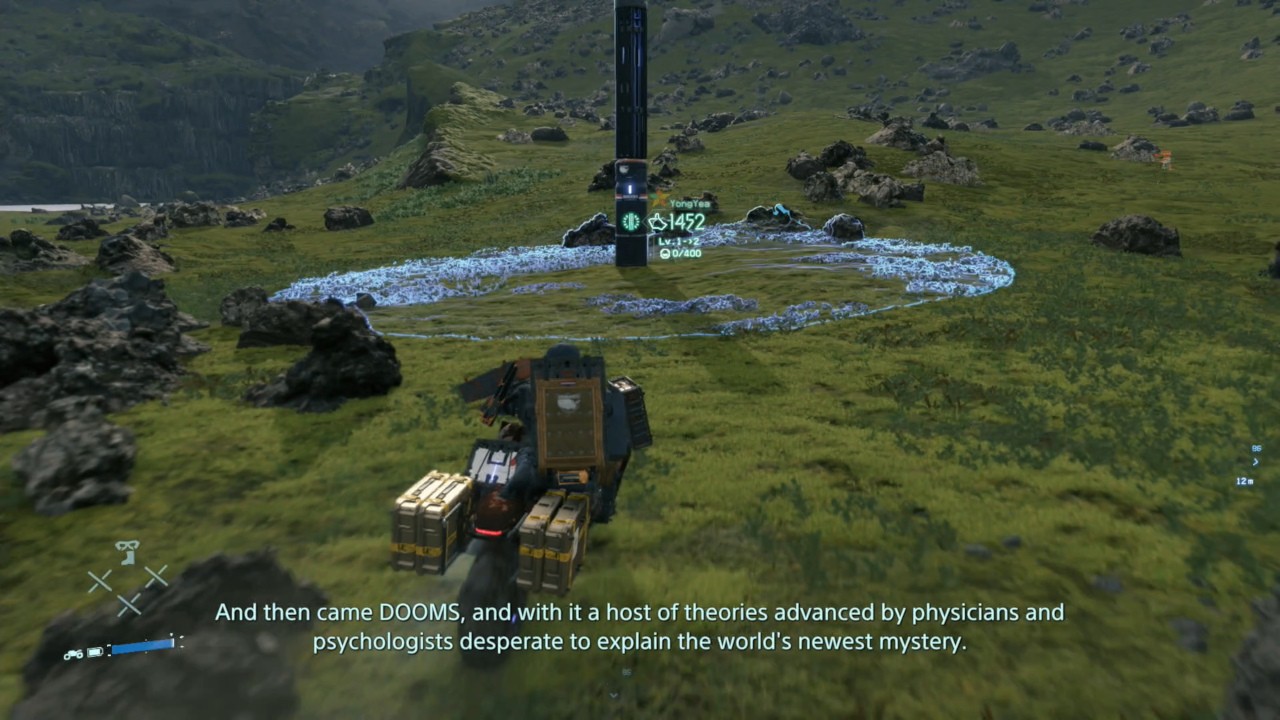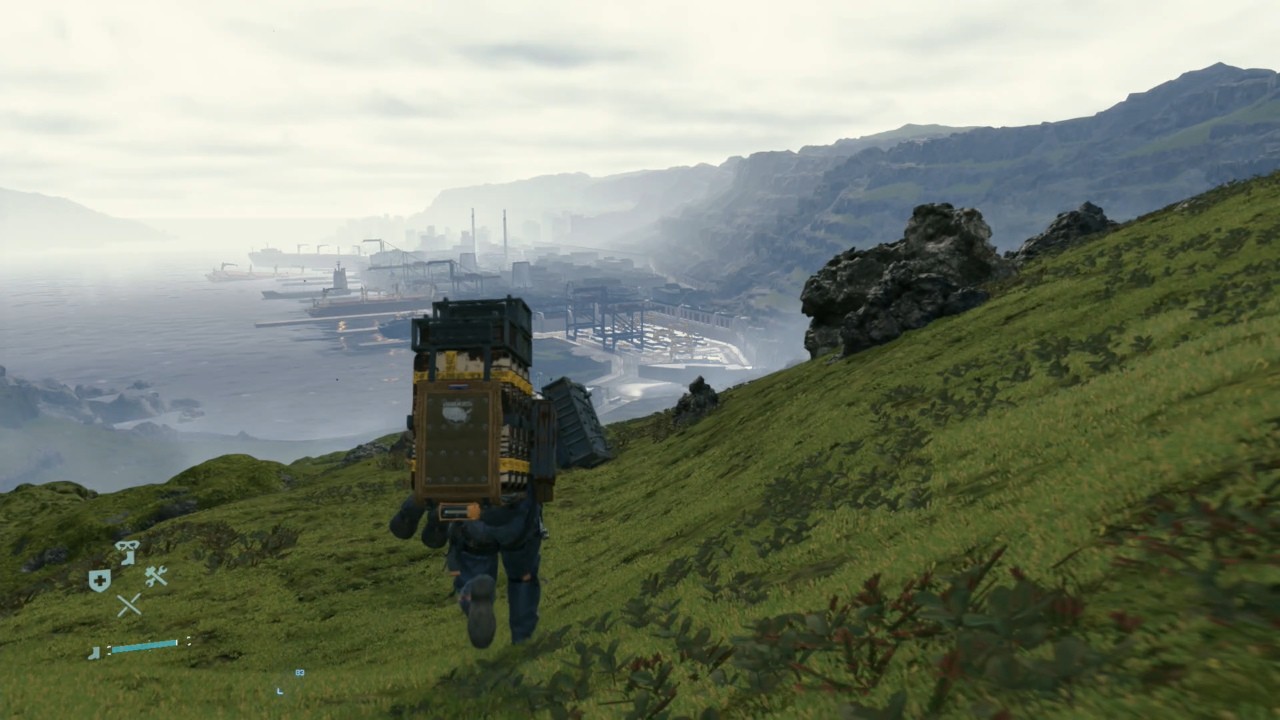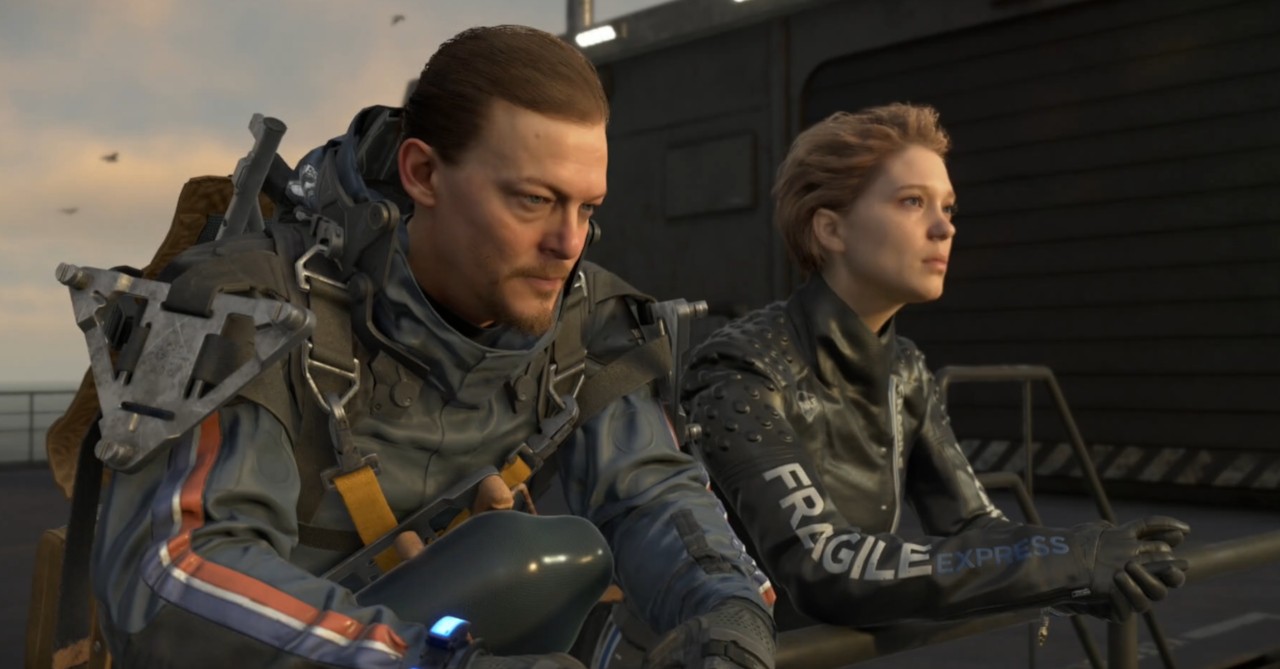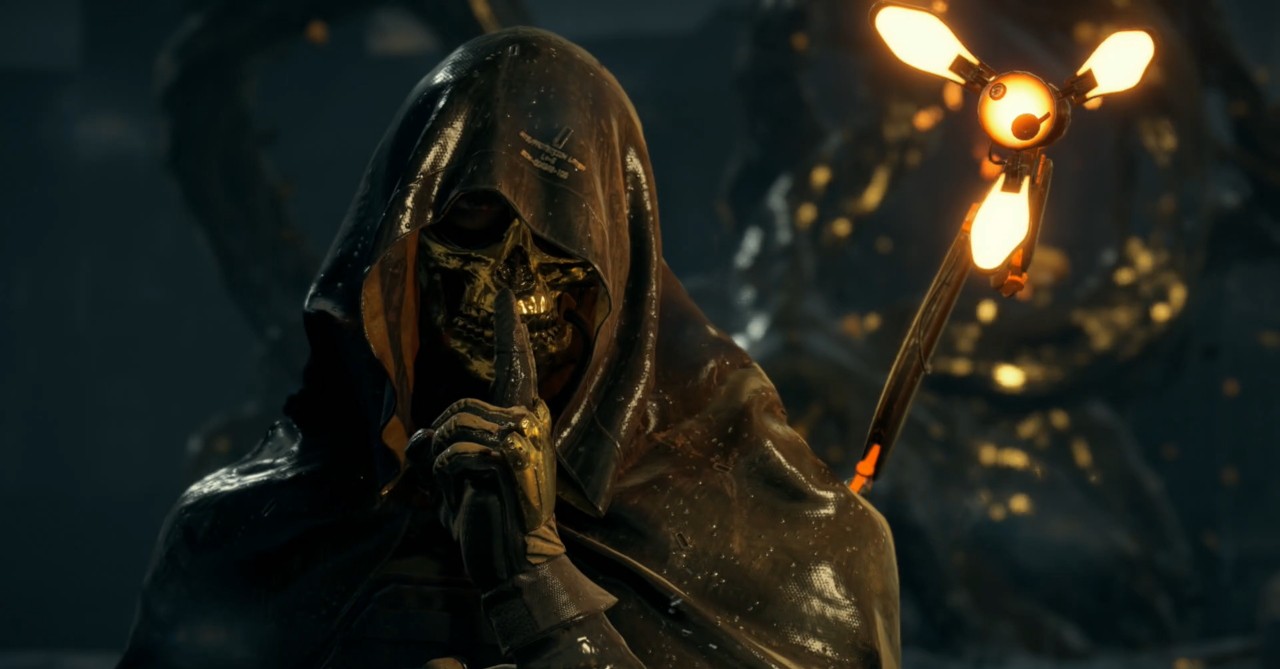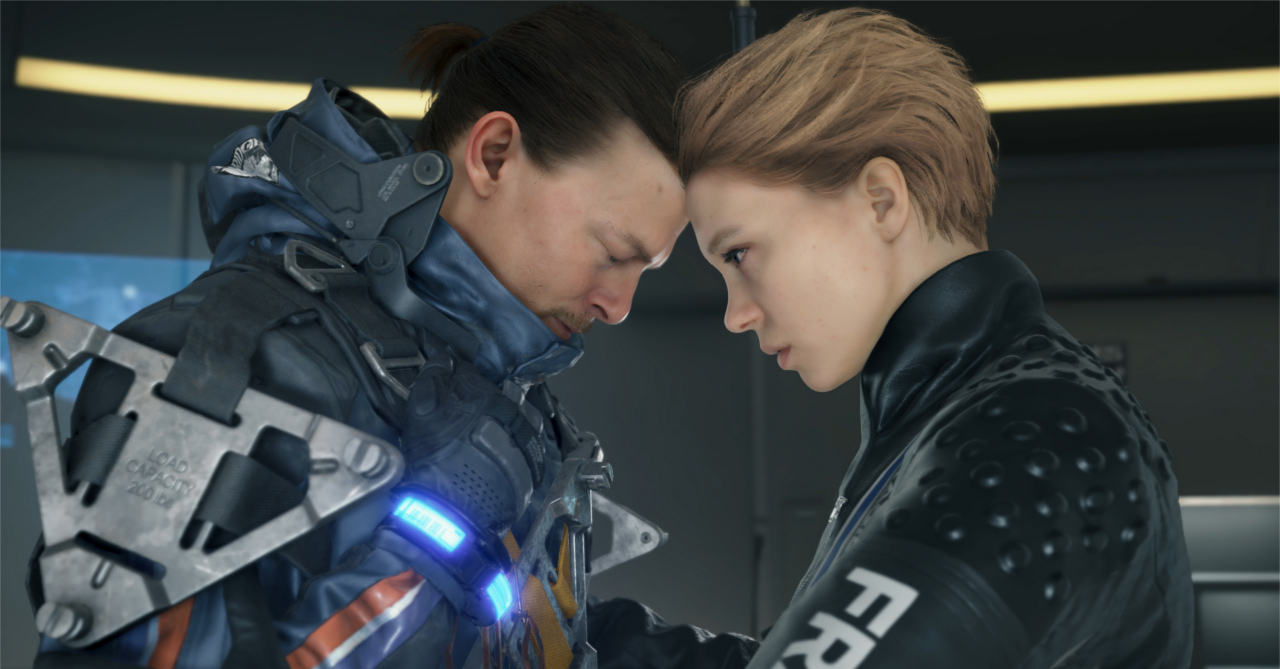Death Stranding Review | An Experience Unlike Any Other
A walking simulator this is not!
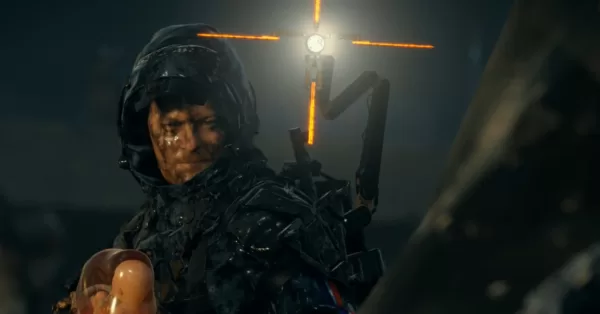
(Note: This review does NOT contain story spoilers)
As Hideo Kojima’s first non-Metal Gear game in decades, Death Stranding is easily one of the most anticipated games in recent years. Make no mistake though, while Kojima fans are definitely excited to play it, a lot of people just want to find out what exactly the game is about. Ever since the game’s bizarre reveal back in 2016, things just got weirder and weirder as more trailers were released; I mean, strapping a pod baby that detects supernatural beings is pretty out there. It doesn’t help that Kojima says that Death Stranding “is a completely new type of action game,” a bold claim, but it still doesn’t explain much.
So what exactly is Death Stranding? Well, it’s all about connecting, and it’s a game that offers an experience unlike any other.
In this game, you play as Sam Porter Bridges, a porter who delivers important cargo between cities in a post-apocalyptic America ravaged by the “Death Stranding.” Because of the “Stranding,” people have isolated themselves in cities, building walls resulting in a fractured country. That’s where Sam comes in; Sam is tasked to make America whole by connecting them to the “Chiral Network” (think of it as a more advanced internet) and re-form the country into the “United Cities of America” (the UCA).
Connecting the isolated cities and outposts of a ravaged America is Sam’s main goal, though not every city/outpost wants to re-connect. But by delivering important cargo to/from them, Sam can convince them to join the network.
At its core, the game’s main goal every mission is for Sam to deliver important cargo from point A to point B. Yes, the game’s missions are all fetch quests.
Not Just a Walking Simulator
Now, fetch quests are the bane of almost any gamer in a typical triple-A title. For the most part, these quests exist as nothing more than padding, or maybe as a reason for players to explore the open world. Not in Death Stranding though; in this game, going from point A to point B is a challenge in and of itself.
If you’ve seen the 49-minute Tokyo Game Show demo, you probably have a bit of an idea how the game plays. Basically, each order (or mission) requires you to deliver a varying amount of cargo; some orders consist of just a couple of small and light packages, others have large and heavy containers that you must bring to a destination. What makes these deliveries challenging is that you can only bring a set amount of items limited by weight. That includes all your other non-delivery items such as traversal equipment, weapons, etc. Death Stranding is realistic in that way, unlike standard triple-A titles where you can bring an obscene amount of items with you as you go out and about.
The weight limit isn’t the only thing to think about when readying loadouts for orders. You also have to think about how to actually carry them. Death Stranding’s Cargo Management system is rather complex in that there are tons of options on how to arrange different types of cargo. For instance, some pieces you can strap onto your body, while others have to be put in your backpack. Hell, your backpacks’s contents can even be optimally arranged so that your center of gravity is, well, centered. Now this might seem like too much busywork, but having these options is incredibly important given how much of a challenge navigating the world’s terrain is.
Unlike most triple-A open world games where navigating the environment is not something you really think about, Death Stranding is different in that the world throws a lot of challenges at you. The game’s open world has a variety of environmental obstacles such as cliffs, mountains, rocky terrain, rivers, and more, all of which pose a challenge especially considering how much cargo you’ll usually be carrying.
The thing with these obstacles is that all of them can be overcome one way or another. Other games have only one set path where you can climb, but in Death Stranding, you can scale almost anything, provided you have the tools to do so. In the game’s Cargo Management, you can bring ladders and climbing anchors to climb and descend mountains easily; the thing is though, mountain climbing in the game can be difficult, and you can damage your cargo if you slip up. Because of this, you can choose instead to look for alternate routes.
In Death Stranding, you can set waypoints to your objective, but setting one won’t magically give you an optimal route like in most other open-world titles. Instead, you’ll have to plan out the route yourself via the game’s map. With the map, you’ll see all the kinds of terrain that you can come across going to your objective, including important details like steep inclines and other obstructions. What this means is that you can decide to take a shorter path along mountainous terrain to get to your destination (and just bringing lots of ladders and anchors), or you can instead take a slightly longer but flatter route to your delivery point.
Taking the “easiest” path that you can see in your map isn’t always the best idea, though. Aside from environmental obstacles, you’ll also face challenges along the way in the form of MULEs and BTs.
MULEs are humans (mostly former porters) who become crazily obsessed with cargo, so much so that they’ll try and take cargo off wandering porters by force. If you come across an enemy MULE camp and they detect you carrying deliveries, prepare for a fight. This doesn’t mean they’re out to kill you though, they just want what you’re carrying. If you do find yourself near a MULE camp, you can either try and sneak your way past them (a la Metal Gear), fight them using the various tools and weapons at your disposal (if you chose to bring some), or just try and run away.
All three are valid solutions to getting through MULE camps, and choosing what to do often boils down to what and how much cargo you’re carrying and if you have weapons at your disposal. For example, if you have lots of cargo with you, you’ll be hard-pressed to make a run for it, instead you can set your cargo aside and try to take the MULE camp down silently so you can proceed.
MULEs may be slightly reminiscent of enemy outposts in other open-world titles, but BTs are a different thing entirely. BTs or “Beached Things,” are unsettling beings from another realm that appeared in the world following the “Death Stranding.” Unlike MULEs, BTs pose a different challenge in that you don’t have much choice but to stealthily get past them or take them down quietly.
Sneaking past BTs are made difficult because, while you can see them when you stay still, they’ll vanish from sight once you move. While moving, you have to rely on your BB (pod baby) to approximate their locations. On the flipside, BTs can’t see you either, they can just hear you if (like Clickers from ‘The Last of Us’), this makes for incredibly tense encounters that are a nice twist from more typical stealth action gameplay.
If you do get captured by a BT, you’ll be transported into a fight against a massive BT. These serve as boss fights of sorts where you have to whittle away the BT’s large health bar via grenades and other weapons. If you didn’t bring enough weapons, don’t worry as you may be given weapons and other items to help you defeat the BT by a friendly entity. Now, while these boss fights look great, they’re not exactly fun. It just boils down to dodging the boss’ attacks and lobbing grenade after grenade, making the fights a bit tedious. Still, it kinda makes sense if you think about it as it incentivises you to not get caught by BTs while out in the world.
From environmental obstacles, to MULEs and BTs, there are a ton of challenges involved in each delivery, making this far from a boring walking sim as some people suggest. Even if I already delved deep into the game’s mechanics, I have yet to even share everything that the game throws at you in its entirety. As you progress through the story, the game introduces even more obstacles for you to face, as well as various tools for you to get past them. Overall, the game has a lot of systems, but they all work incredibly well together, and none of the mechanics feel tacked on.
It’s actually when these complex systems interact where the gameplay truly shines, especially considering the world’s terrain adds a layer of depth to the various enemy encounters. One of the most memorable moments in my playthrough for example was when I had to go through a mountainous BT-infested area to get to my destination. During that mission, I wasn’t able to bring enough grenades so I instead dropped my remaining ladder and went over to higher ground. This proved to be the right choice as there were slightly less BTs up on that path, meaning I had just enough grenades left to carve a safe path.
While delivering cargo is at the core of gameplay, one thing that you can also do is connect the world, literally. Once a city/outpost is connected to the Chiral Network, various structures such as postboxes, generators, and bridges can be made. With these, cities/outposts are made more accessible, meaning future deliveries to/from places connected to the network will be easier.
Even if you don’t need to build them to progress the story, there is a certain sense of satisfaction in connecting different areas via a network of bridges and roads. The feeling of accomplishment in building structures in-game is sort of similar to how fun it is to build a rail network in Minecraft.
You’re not the only one to benefit by building structures all over the map, other players too will have an easier time because of the game’s asynchronous multiplayer system. Much like how players can leave notes for others in Dark Souls, players in Death Stranding can see sights, structures, and items left by others. To add a layer of personal connection,”likes” are awarded for each use of a structure by another player, enticing everyone to build structures to connect the world further. While this multiplayer function is not required to enjoy the game, it definitely complements game’s theme of “strands” or connections.
A Beautiful, Lonely World
Traveling through America in Death Stranding is a sight to behold thanks to the amazing photo-realistic graphics; plus the beautiful world is complemented by a stand-out soundtrack. In spite of this, there’s not much incentive to explore in a typical sense. Usually, other open-world games have side-quests and other locales spread across the map to get players to explore. In Death Stranding, you explore the world to connect outposts, but there isn’t much to see aside from those.
That’s not to say it’s a bad open-world though, in fact, it’s an incredibly engaging game world thanks in large part to how deep and well thought out traversal is. Sure, it might not scratch that exploring itch that others open worlds do, but it does feel like one of the most “open” worlds I’ve ever played in that I never felt limited in what I can do. If you’re looking for a world that’s “alive,” Death Stranding isn’t for you; though the lack of people out and about does make sense in the context of the story.
An Ambitious Story with Incredible Worldbuilding
In typical Kojima fashion, the game’s story is complex and ambitious, even though it might not be as exciting as the plot of the Metal Gear titles. While it’s a slow burn, uncovering the mysteries of “Death Stranding” is enough for me to keep on playing. The world of Death Stranding stands as an incredible achievement in worldbuilding, though the moment-to-moment storytelling could use a bit of tweaking.
In Sam’s journey, he meets various characters that aid him in his journey to connect the fractured cities of America. The game’s cast are well-realized characters with extensive backstories that are tied to the game’s central plot and theme, though I found it hard to connect with them. This might be because of the dialogue which, much like in the Metal Gear games, is a bit overlong and filled with technobabble.
That’s not to say the story lacks heart, in fact, it’s a sentimental tale with lots of memorable moments. And in spite of its complexity, everything makes sense in the end. Even though it could be improved on a per-scene level, the fact that nearly all of Death Stranding’s story elements are tied together to its theme and message is worthy of praise. It’s one of the rare triple-A titles with something to say.
Final Verdict — 9/10
Pros:
- Core gameplay loop is engaging even with the focus on traversal instead of combat
- Complex systems and mechanics that are tied together nicely
- BT encounters are intense
- A beautiful open world complemented by great music
- An ambitious story with a strong main theme and message
Cons:
- Per-scene storytelling could be more engaging
- “BT” boss fights are tedious
- Fans of action-heavy games will find the game slow/boring
In a sea of open world action games, Death Stranding stands out by daring to be different. Instead of focusing on action, the game’s core loop is centered around traversal, and it works. Death Stranding’s missions may be fetch quests at their core, but they are made engaging thanks to the various obstacles that players can solve in a variety of ways. In spite of some missteps such as the tedious BT boss fights, Death Stranding’s gameplay is still satisfying overall, and it stands as something truly new.
Aside from this innovative approach to gameplay (at least in the world of triple-A gaming), Death Stranding is also one of the few games with this original and complex a story and world. Even though the scene-level storytelling could use a bit of work, the story is tied up well.
For me though, the game’s biggest achievement is how tied together everything is to the theme of “strand.” Nearly every aspect of the gameplay and the story is intertwined with the theme of connection. In this regard, Death Stranding is a full realization of director Hideo Kojima’s vision.
If you want to experience a completely new kind of game with a heartfelt message at its core, Death Stranding is a definite must-play, in spite of some minor flaws. Though it won’t be something that everyone will like; in fact, this might just be the most love-it-or-hate-it triple-A game to date. Some will surely love Death Stranding as much as I did, others will be bored to the tears, but no one can deny that we need more games that push boundaries like this.
Death Stranding releases on November 8 on the PlayStation 4.
*This game was reviewed using a PlayStation 4 Slim via a review copy sent by Sony Interactive Entertainment Singapore and Kojima Productions.



